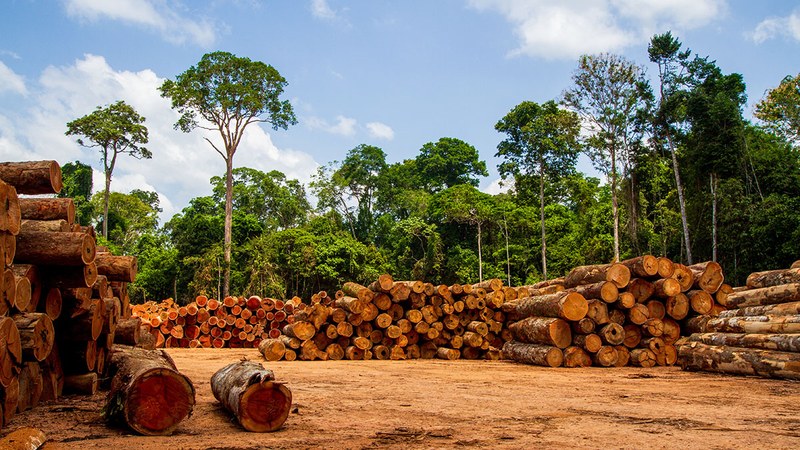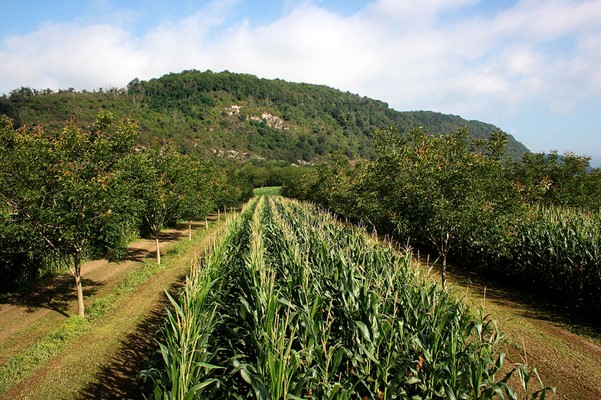All official European Union website addresses are in the europa.eu domain.
See all EU institutions and bodiesSociety attributes various values to forests, shaped by experiences, beliefs, and understanding. Forests have instrumental value, offering tangible benefits like timber and recreation. They also have relational value, reflecting the cultural, emotional, and social connections people have to them. Finally, people assign intrinsic value to forests, acknowledging their inherent worth independent of human use. Forest management must balance these relational, instrumental, and intrinsic values to sustainably meet diverse societal needs.
Main messages
By offering jobs, wood products, water purification and opportunities for recreation, forests are crucial for environmental and human well-being.
Agroforestry systems can produce more biomass per hectare than monoculture croplands, since timber is also produced.
The socio-economic benefits are far greater than the provision of raw wood material alone.
In this section:
Related research highlights

Forest ecosystem services
When we think about the positive role that forests provide to society we tend to immediately think about them as a source of timber for the construction of wooden buildings, furniture, fencing and everyday items that we use around our homes. However, when we pause a little longer to ponder the goods and services that forests deliver, we’ll soon come up with a longer list of benefits.

Timber traceability: pioneering innovation to eradicate deforestation from Europe's supply chain
If a tree falls in a forest, how do we know when, where and how it happened? As the world continues to lose 10 million hectares of forests each year, tracking the origin of wood products imported by the EU is an ambitious challenge.

Urban forestry: multi-functional greening in the city
When we think about forestry, we tend to imagine an activity which takes place largely across extensive rural landscapes. However, in an era of rapid urbanisation, trees and woodlands are also increasingly valued as integral components of our towns and cityscapes.

Forests and food: agroforestry and non-wood forest products for a sustainable food system
Forests play a crucial role in sustaining biodiversity, mitigating climate change, and ensuring food security. Among their many functions, forests help prevent land degradation and erosion, maintain crop yields, and regulate both water quantity and quality, thereby promoting resilient agricultural practices. In agroforestry systems, the integration of trees enhances sustainable production methods. Additionally, forests provide food products that hold significant socioeconomic and cultural value, enriching communities and supporting livelihoods.
Related policies
The EU Forest strategy for 2030 sets a vision and concrete actions to improve the quantity and quality of EU forests and strengthen the protection, restoration and resilience.
The EU Bioeconomy strategy implements action plans based on sustainability and circular bioeconomy to achieve climate objectives.
The EU Circular Economy Action Plan targets how products are designed, promotes circular economy processes, encourages sustainable consumption, and aims to ensure that waste is prevented and the resources used are kept in the EU economy for as long as possible.
The Renewable Energy Directive establishes the guidelines for the sustainable use and promotion of renewable energy in the European Union.
The EU Taxonomy aims to direct investments towards sustainable economic activities thereby assisting the climate and energy targets established in the Green Deal.
The Regulation on Deforestation-free products establishes requirements for importing certain commodities to reduce the EU’s impact on global deforestation and forest degradation.
The Recovery and Resilience Facility (RRF) is a temporary instrument that raises funds to reforms and investments to support EU in the current crisis.
Related targets
- The Kunming-Montreal Global Biodiversity Framework (GBF) has a target 11 to restore, maintain and enhance nature’s contributions to people, including ecosystem functions and services, such as the regulation of air, water and climate, soil health, pollination, among others, for the benefit of all people and nature. See the assessement here.
- The Goal 2.4 from the Global Forest Goals aims to significant increase the contribution of forest industry, forest-based enterprises and forest ecosystem services to social, economic and environmental development.
- Under the EU Biodiversity Strategy for 2030, Member States should bring back at least 10% of agricultural area under high-diversity landscape features by 2030. These includes woody features like tree lines, tree groups and hedges among other small habitats.
- The EU Forest Strategy recognises the central and multifunctional role of forests, and the contribution of foresters and the entire forest-based value chain for achieving a sustainable and climate neutral economy by 2050 and preserving lively and prosperous rural areas.
Related resources
Eurostat forestry database Statistics on timber removals, wood products and trade, economics employment, forest resources and environmental functions.
JRC Bioeconomy knowledge centre for bioeconomy A European Commission initiative on better knowledge management for bioeconomy-related policy making.
JRC - Mapping and Assessment of Ecosystems and their Services In the context of the EU Biodiversity Strategy the Joint Research Centre developed a series of maps of ecosystem services.
Horizon Europe. EU’s key funding programme for research and innovation.
